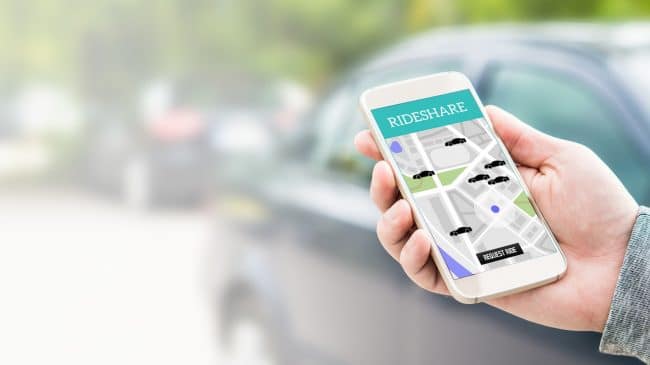A recent working draft from the University of Chicago Boothe School of Business claims that ride-hailing services such as Uber and Lyft are leading to more fatalities in places where they operate. The paper uses a “difference in difference” model to find that ride-hailing is associated with a two-to-three percent increase in fatal crashes. As written the paper has some significant flaws. Fortunately, the authors are soliciting comments and I am hopeful that they use that feedback to revise the paper.
Joe Cortright of City Observatory wrote one of the best critiques or the study I’ve seen so I will start with the points he raised and then add a few of my own.
The University of Chicago study’s authors compare the dates and fatality rates from the time that Uber and Lyft launched service in several cities with today. They note an increase in fatalities and determine that ride-hailing services are the prime cause. That approach shows correlation but not causation. There is a correlation between the introduction of ride-hailing services and the fatality rate increasing. However, that does not mean that an increase in ride-hailing caused the increased fatality rate. That increase could have been due to increased vehicle-miles traveled or more driver distractions. Nowhere does this study show that ride-hailing is the cause of increased fatalities.
Vehicle-miles traveled have been increasing nationwide since the Great Recession. The growing economy, lower unemployment rates, easier access to vehicles and lower gas prices all play a role in the amount of driving done. Logically, even if the fatality rate holds constant, the more miles that are driven, the more fatalities will occur. Yet the study neither adjusts for the increase in miles driven (by using fatality rate instead of total fatalities) nor does it take any of the other economic factors into consideration.
Based on the study’s conclusions, and since ride-hailing services operate in primarily urban areas, if Uber/Lyft are the primary cause of additional fatalities then urban fatality rates should increase compared with rural fatality rates. Yet the opposite is true. National Highway Traffic Safety Administration’s (NHTSA) data show that while overall fatality rates per one hundred million miles traveled increased from 1.10 in 2015 to 1.18 in 2016, rural fatality rates increased twice as fast, from 1.82 to 1.96 (7.7 percent) as urban rates, which went from 0.74 to 0.79 (3.9 percent). Nowhere does the University of Chicago study address this issue or seek to explain these contrary results.
The overall research approach of the study seems weak. Since the authors were unable to obtain the number of drivers, riders, or rides given per city, they used the volume of Google searches related to ride-hailing to determine the amount of ride-hailing activity. This is a strange way of estimating ride-hailing. For example, choosing Lyft is one of many travel options. A commuter could research the price of a Lyft and, depending on price, could decide to drive his own car or take transit. The link between researching Uber’s price and taking a ride-hail vehicle is not that strong. Another problem with this method is determining the specific times ride-hailing trips are made. Such trips are not evenly distributed.
Even without trip data, the authors could have built a database using the publicly-available variations in ride-hailing activity over time. Susan Feigon wrote a five-city study for the Transit Cooperative Research Program that the authors could have used. Since we know the date, time and location of a crash as well as the time and location of ride-hailing, the authors could have studied the correlation between ride-hailing and crash deaths by block and by day. Obviously, this is more accurate than aggregating the crash data at the city level by year.
If the authors had used time of day and location data, safety researchers could have determined whether ride-hailing is at fault. Ride-hailing is concentrated in urban areas and around airports and most used on Friday and Saturday nights. If the increased accidents occurred on Tuesday mornings in suburban areas, we could then accurately state ride-hailing is not the primary cause.
Given that these researchers work in the University of Chicago Business School, they may not be transportation experts. However, they may want to seek out and work with a cross-disciplinary team with other researchers in Chicago. Partnering with a researcher at Northwestern University’s transportation engineering program or the University of Illinois at Chicago’s transportation planning and policy program, for example, could have provided the benefit of seasoned transportation researchers who might have pointed out methodological flaws and suggested better data sources.
I believe Uber and Lyft have increased mobility and economic activity in urban areas. This increased economic activity has its downsides, including increased traffic congestion. Most studies have found that distracted driving is the main cause of additional traffic accidents. I’m skeptical that ride-hailing services play a significant role. Regardless, this study has failed to demonstrate what it claims to have shown and needs significant revisions.

